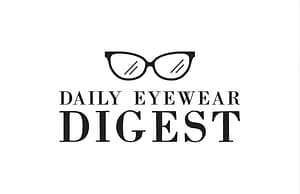Headaches are a common ailment that many people experience. However, frequent headaches can sometimes indicate underlying vision problems. Understanding the connection between headaches and vision issues is essential for proper diagnosis and treatment. This article will explore how uncorrected vision problems can lead to headaches and provide tips on alleviating this discomfort.
Importance of Understanding Headaches
Understanding the underlying causes of frequent headaches is crucial for effective treatment and prevention. While headaches can result from various factors, including stress, dehydration, and medical conditions, vision problems are often overlooked. Identifying and addressing vision-related headaches can significantly improve quality of life.
Common Types of Headaches
There are several types of headaches, each with distinct characteristics:
- Tension Headaches: Characterized by a dull, aching sensation around the head, often caused by stress or muscle tension.
- Migraines: Intense, throbbing pain usually on one side of the head, often accompanied by nausea, sensitivity to light, and sound.
- Cluster Headaches: Severe, recurring pain on one side of the head, typically around the eye.
Vision-Related Headaches
Vision problems can trigger headaches when the eyes work harder than usual to focus. This additional effort can strain the eye muscles and lead to headaches. Common vision issues that may cause headaches include:
- Uncorrected refractive errors (nearsightedness, farsightedness, astigmatism)
- Eye alignment problems
- Poor lighting conditions
- Extended screen time
Symptoms of Vision-Related Headaches
Identifying the signs that headaches may be related to vision issues can help in seeking appropriate treatment. Symptoms include:
- Headaches that occur after prolonged visual tasks, such as reading or computer use
- Pain around the eyes or temples
- Blurred or double vision
- Sensitivity to light
Eye Strain and Headaches
Eye strain, also known as asthenopia, is a common cause of headaches. It occurs when the eyes are overworked, leading to discomfort and pain. Common causes of eye strain include:
- Prolonged use of digital devices
- Reading for extended periods without breaks
- Poor lighting conditions
Uncorrected Refractive Errors
Refractive errors occur when the shape of the eye prevents light from focusing correctly on the retina. Common refractive errors include:
- Myopia (Nearsightedness): Difficulty seeing distant objects clearly
- Hyperopia (Farsightedness): Difficulty seeing close objects clearly
- Astigmatism: Blurred vision at all distances due to an irregularly shaped cornea
These errors can cause headaches as the eyes strain to focus.
The Impact of Poor Lighting
Poor lighting conditions can exacerbate vision problems and contribute to headaches. Insufficient or harsh lighting forces the eyes to work harder, leading to strain and discomfort. Ensuring proper lighting in workspaces and reading areas can help reduce the risk of headaches.
Digital Eye Strain
With the increasing use of digital devices, digital eye strain has become a prevalent issue. Symptoms of digital eye strain, also known as computer vision syndrome, include:
- Headaches
- Blurred vision
- Dry eyes
- Neck and shoulder pain
Taking regular breaks and using ergonomic setups can help alleviate these symptoms.
The Role of Blue Light
Blue light from screens can disrupt sleep patterns and contribute to digital eye strain, leading to headaches. Using blue light filters on devices and reducing screen time, especially before bed, can mitigate these effects.
Eye Alignment Issues
Eye alignment problems, such as strabismus (crossed eyes) and convergence insufficiency (difficulty focusing on near objects), can cause significant eye strain and headaches. These conditions often require specialized treatment, such as vision therapy or corrective lenses.
Importance of Regular Eye Exams
Regular eye exams are essential for detecting vision problems early and preventing related headaches. Eye care professionals can identify issues that may not present obvious symptoms and recommend appropriate corrective measures.
Corrective Measures
Addressing vision problems with corrective measures can significantly reduce headaches. Options include:
- Glasses: Prescribed lenses can correct refractive errors and alleviate strain.
- Contact Lenses: An alternative to glasses, offering a wider field of vision.
- Vision Therapy: Exercises and treatments designed to improve eye coordination and alignment.
Lifestyle Changes
Making certain lifestyle changes can help reduce the frequency of vision-related headaches:
- Taking regular breaks during visual tasks
- Adjusting lighting to reduce glare and improve visibility
- Using ergonomic setups for computer use
- Staying hydrated
The Role of Nutrition
A balanced diet rich in essential nutrients can support eye health and reduce headaches. Include foods high in:
- Omega-3 Fatty Acids: Found in fish like salmon and tuna
- Antioxidants: Present in leafy greens, berries, and nuts
- Vitamin A: Abundant in carrots, sweet potatoes, and dark leafy greens
Hydration and Headaches
Dehydration is a common cause of headaches. Drinking plenty of water throughout the day can help prevent headaches and support overall health, including eye health.
Sleep and Vision Health
Poor sleep quality can affect vision and contribute to headaches. Ensure adequate rest by:
- Maintaining a regular sleep schedule
- Creating a comfortable sleep environment
- Limiting screen time before bed
Stress and Its Effects on Vision
Stress can exacerbate both headaches and vision problems. Managing stress through relaxation techniques, exercise, and mindfulness can help reduce the impact on your eyes and overall well-being.
Children’s Vision and Headaches
Children may not always communicate vision problems, but headaches can be a sign. Regular eye exams and monitoring for signs like squinting, difficulty reading, or frequent eye rubbing are crucial.
Myths about Vision and Headaches
Several myths surround the relationship between vision and headaches. Common misconceptions include:
- Wearing glasses weakens eyes: Glasses correct vision and reduce strain, not weaken eyes.
- Reading in dim light causes permanent damage: It can cause temporary strain but not permanent damage.
FAQs about Vision-Related Headaches
How can I tell if my headaches are related to vision problems? Look for symptoms like eye pain, blurred vision, and headaches occurring after visual tasks. An eye exam can provide a definitive diagnosis.
Can wearing the wrong prescription glasses cause headaches? Yes, wearing an incorrect prescription can strain your eyes and lead to headaches. Ensure your prescription is up to date.
What are some quick relief tips for vision-related headaches? Take regular breaks from screens, ensure proper lighting, and practice eye exercises. Using blue light filters and staying hydrated can also help.
Can digital eye strain cause long-term damage? While digital eye strain can cause discomfort, it typically doesn’t lead to permanent damage. However, addressing the strain can improve overall eye comfort.
How often should I have my eyes checked? Adults should have an eye exam every two years, or more frequently if experiencing vision problems or headaches. Children should have regular check-ups as recommended by their eye care provider.
Are there specific glasses for digital eye strain? Yes, computer glasses with blue light filters can help reduce digital eye strain and associated headaches.
Conclusion
Frequent headaches can often be linked to uncorrected vision issues. By understanding the connection between vision problems and headaches, you can take proactive steps to address the underlying causes and improve your quality of life. Regular eye exams, proper lighting, and lifestyle adjustments can go a long way in preventing and alleviating vision-related headaches.

